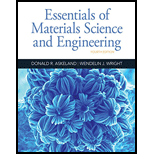
(a)
Interpretation:
The microstructure present in
Concept Introduction:
Heat treatment is a process used to change the material's physical and chemical properties. Metallurgical is the most frequent applications. Heat treatment is used in the production of many products such as glass. Heat treatment includes heating or cooling to achieve the required outcome, usually at extreme temperatures.
Answer to Problem 13.14P
The microstructure that is present after going through the various processes, is ferrite and pearlite.
Explanation of Solution
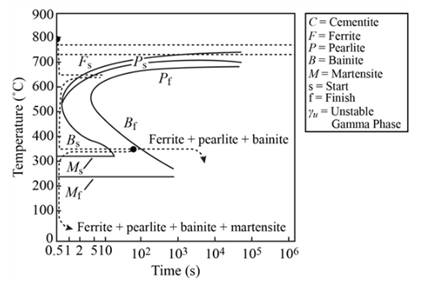
When
(b)
Interpretation:
The microstructure present in steel heated at
Concept Introduction:
Heat treatment is a process used to change the material'sphysical and chemical properties. Metallurgical is the most frequent applications. Heat treatment is used in the production of many products such as glass. Heat treatment includes heating or cooling to achieve the required outcome, usually at extreme temperatures.
Answer to Problem 13.14P
Bainite remains as microstructure after going through the heating and quenching process.
Explanation of Solution

When
Thus, bainite microstructure remains after going through heating and quenching.
(c)
Interpretation:
The microstructure present in steel after being heated at
Concept Introduction:
Heat treatment is a process used to change the material's physical and chemical properties. Metallurgical is the most frequent applications. Heat treatment is used in the production of many products such as glass. Heat treatment includes heating or cooling to achieve the required outcome, usually at extreme temperatures.
Answer to Problem 13.14P
Martensite remains as microstructure after heated at
Explanation of Solution

When
(d)
Interpretation:
The microstructure present in
Concept Introduction:
Heat treatment is a process used to change the materials physical and chemical properties. Metallurgical is the most frequent applications. Heat treatment is used in the production of many other products such as glass. Heat treatment includes heating or cooling to achieve the required outcome, usually at extreme temperatures.
Answer to Problem 13.14P
Ferrite and martensite remain as microstructure after heated at
Explanation of Solution
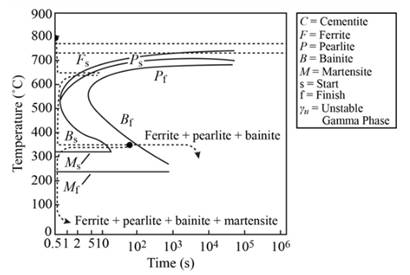
When
(e)
Interpretation:
The microstructure present in
Concept Introduction:
Heat treatment is a process used to change the material's physical and chemical properties. Metallurgical is the most frequent applications. Heat treatment is used in the production of many products such as glass. Heat treatment includes heating or cooling to achieve the required outcome, usually at extreme temperatures.
Answer to Problem 13.14P
Ferrite and bainite remain as microstructure.
Explanation of Solution
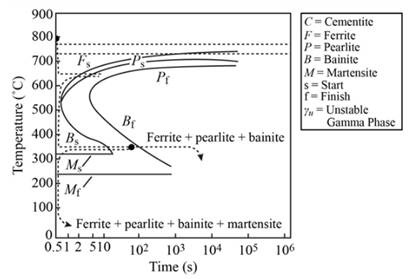
When the
(f)
Interpretation:
The microstructure present in
Concept Introduction:
Heat treatment is a process used to change the material's physical and chemical properties. Metallurgical is the most frequent applications. Heat treatment is used in the production of many products such as glass. Heat treatment includes heating or cooling to achieve the required outcome, usually at extreme temperatures.
Answer to Problem 13.14P
Ferrite, bainite, and martensite remain as microstructure.
Explanation of Solution

When
(g)
Interpretation:
The microstructure in
Concept Introduction:
Heat treatment is a process used to change the material's physical and chemical properties. Metallurgical is the most frequent applications. Heat treatment is used in the production of many products such as glass. Heat treatment includes heating or cooling to achieve the required outcome, usually at extreme temperatures.
Answer to Problem 13.14P
Tempered martensite is the only microstructures that remain in
Explanation of Solution

When
Want to see more full solutions like this?
Chapter 13 Solutions
Essentials Of Materials Science And Engineering
 MATLAB: An Introduction with ApplicationsEngineeringISBN:9781119256830Author:Amos GilatPublisher:John Wiley & Sons Inc
MATLAB: An Introduction with ApplicationsEngineeringISBN:9781119256830Author:Amos GilatPublisher:John Wiley & Sons Inc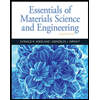 Essentials Of Materials Science And EngineeringEngineeringISBN:9781337385497Author:WRIGHT, Wendelin J.Publisher:Cengage,
Essentials Of Materials Science And EngineeringEngineeringISBN:9781337385497Author:WRIGHT, Wendelin J.Publisher:Cengage, Industrial Motor ControlEngineeringISBN:9781133691808Author:Stephen HermanPublisher:Cengage Learning
Industrial Motor ControlEngineeringISBN:9781133691808Author:Stephen HermanPublisher:Cengage Learning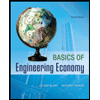 Basics Of Engineering EconomyEngineeringISBN:9780073376356Author:Leland Blank, Anthony TarquinPublisher:MCGRAW-HILL HIGHER EDUCATION
Basics Of Engineering EconomyEngineeringISBN:9780073376356Author:Leland Blank, Anthony TarquinPublisher:MCGRAW-HILL HIGHER EDUCATION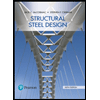 Structural Steel Design (6th Edition)EngineeringISBN:9780134589657Author:Jack C. McCormac, Stephen F. CsernakPublisher:PEARSON
Structural Steel Design (6th Edition)EngineeringISBN:9780134589657Author:Jack C. McCormac, Stephen F. CsernakPublisher:PEARSON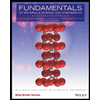 Fundamentals of Materials Science and Engineering...EngineeringISBN:9781119175483Author:William D. Callister Jr., David G. RethwischPublisher:WILEY
Fundamentals of Materials Science and Engineering...EngineeringISBN:9781119175483Author:William D. Callister Jr., David G. RethwischPublisher:WILEY





